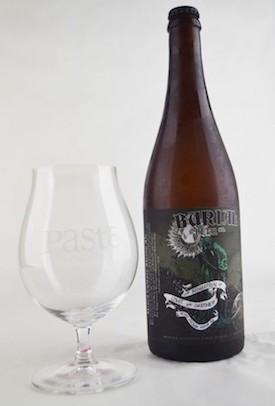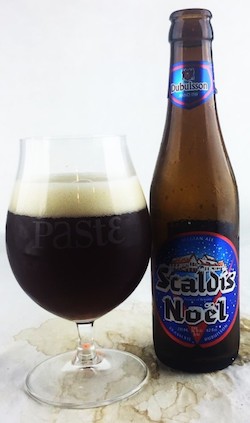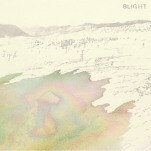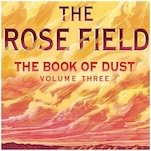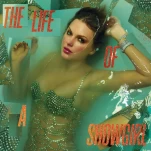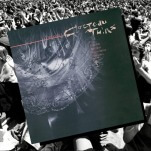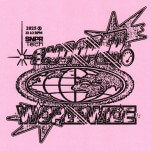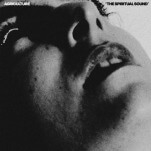The 12 Best Beers of 2017
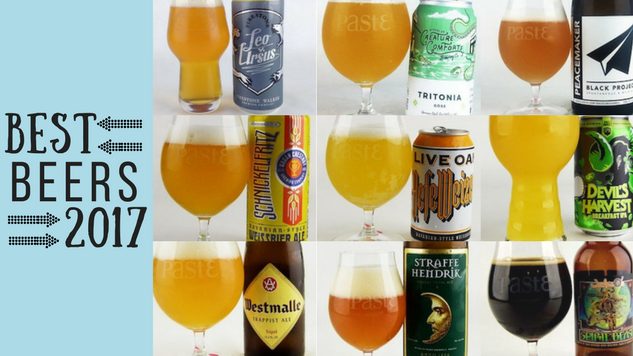
When Paste first began its series of blind tastings in 2014, we were heading into fairly uncharted territory. The internet is rife with large-scale beer lists from all sorts of publishers, but blind tastings are another matter entirely. Put simply, it’s a whole lot more work, and it’s also a much bigger risk. The format itself has the benefit of taking hype entirely out of the equation, but in doing so, you have to live with the consequences of your blind tasting results, even if they may be different from what you expected. Case in point: Would I have predicted Angry Orchard to win our 2016 blind tasting of ciders, even if it was a special release? Answer: Nope. But that’s what happened, and it was a deserving win. https://www.pastemagazine.com/articles/2016/03/82-of-the-best-hard-ciders-blind-tasted-and-ranked.html
Therein lies the true value of the blind tastings Paste continues to conduct on a monthly basis. They strip away the BS and the bias from this process, and in doing so they have a tendency to shine a light upon underappreciated, undervalued breweries and beers, many of which are easy to find and drink. At the same time, they also validate the hype that certain popular breweries have received by giving them the best vindication we know how to give—victory in a big blind tasting.
2017 was a banner year for our beer tastings. A quick bit of math tells me that we blind-tasted a whopping 1,022 beers by the end of November, and that’s not even including December’s Christmas beer tasting, which will likely add more than 100 more. It’s by far the largest number we’ve ever handled in a single calendar year, and the rate of submissions only seems to be increasing. The more breweries we reach out to, the more express interest in seeing where their beers stack up.
In the end, there’s something about the format itself that evokes the craft beer industry’s most romanticized aspects. It’s a free, democratic process. We charge nothing for entries. We accept entries from any and every brewery, regardless of ownership. We get as many as we can, blind taste them, and simply let the chips fall where they may—and may the best beers win.
Here, then, are our favorite beers we blind tasted in 2017.
Best Imperial Stout (Non Barrel-Aged): River North Mr. Sandman
City: Denver, CO
ABV: 13.5%
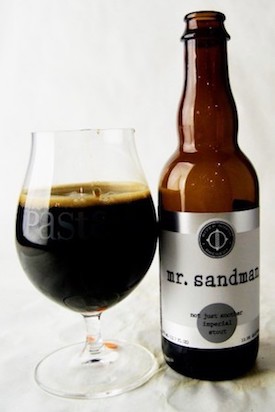
Way back in the summer of 2014, I visited a young brewery in Denver called River North while spending five days drinking my way up and down the breweries of the front range. Although they’re now housed in a different building, I noted then that they could make a good stout. Now, they’ve made our #1 non-barrel aged imperial stout.
River North sent in no fewer than four stouts for this tasting, all of which were interesting in some way. Mr. Sandman is the closest to a “standard” imperial stout, being the same base beer used in their coffee variant, Nightmare Fuel. The latter was also included, and proved divisive in the blind tasting because there was just so much coffee in it. In a tasting of 102 imperial stouts, River North undoubtedly, easily, without question made the beer with the most insane amount of coffee character, and that beer still didn’t make the top 40 because frankly, some of the tasters just couldn’t deal with such an overwhelming surge of java.
The version without coffee, though, was a revelation—one of those rare beers that comes along and no one at the table has anything negative to say about it. It excels not by being specifically unique but by assembling a pitch-perfect composite of all the flavors you want in a big, motor oil imperial stout. Dark fruit flavors of raspberry and cherry intermingle gently with dark, bittersweet baker’s chocolate. Sturdy roast provides a drying counterpart to molasses-like caramelization. Booze—there’s definitely booze, no doubt about that. And like so many of the other great stouts, the x-factor is textural, as Mr. Sandman perfectly balances a decadently creamy mouthfeel with surprising, dangerous drinkability. You could nurse one of these all night, or you could just as likely consume it all too quickly. That’s what being a great imperial stout is all about.
Best Session IPA: Southern Prohibition Devil’s Harvest
City: Hattiesburg, MS
ABV: 4.9%

Wow, wow, wow. Now I can see why we’ve been hearing about Southern Prohibition lately. Devil’s Harvest is the first beer we’ve ever had from the brewery, and it’s our #1 session IPA. The brewery cheekily calls it a “breakfast IPA,” which might lead the unwary to expect a coffee-infused beer, but they’re more accurately referring to either the ABV (which is actually on the higher end as far as the style goes) or the juicy, citrusy hop profile. Either way, this stuff is delicious.
With a soft, creamy mouthfeel similar to the previous beer from Night Shift, Devil’s Harvest takes more than a few cues from NE-IPA brewing techniques. A “moderate dose of oats” enhances the creamy mouthfeel in a way we tend to associate with Maine Beer Co.’s IPAs, and that comparison isn’t too far off. Big waves of orangey citrus give way to lots of apricot-like stone fruit character that is particularly lovely. Bitterness is more or less nil—this beer is an aromatic powerhouse, but it leans entirely on texture rather than bitterness to keep it from coming off like fruit juice. To quote one score sheet, “This is effortless drinking.” To quote another that didn’t exactly mince words: “People will like this beer.” True enough. If the goal of session IPA is to deliver a decadently hoppy, but still drinkable profile in a small package, then Devil’s Harvest is a beer that exemplifies the spirit of the style. If session IPA is your thing, then you need to seek this one out.
Best Belgian Tripel: Straffe Hendrik Bruges Tripel Bier
City: Brugges, Belgium
ABV: 9%

I can’t help but be reminded here of when we did our Belgian quad tasting, which was won by Gouden Carolus Cuvee de Van de Keizer. Like that tasting, this one has been won by a classic Belgian brewery … but perhaps not exactly the one you might be expecting. Referred to by one of the tasters on his sheet as “concentrated tripel,” it packs a serious punch in its 9% ABV frame. Boozier than most (though on par with many of the other Belgians), it has a sherry-like alcohol note that is not unpleasant, and fades without astringency into a plethora of fruit flavors of both banana and red fruit. To quote one score sheet: “Soft and peppery spice, very nice.” It’s a very assertive take on tripel, but it manages to do so (and to express quite a bit of alcohol) while having a dry finish, which is fairly rare. Even more rare is the fact that it can be both boozy and dry without being at all harsh on the palate. This beer walks a very delicate balancing act, and pulls it off with eloquence. It’s our pick for the best pure tripel among these 36 beers.
Best Barrel-Aged Imperial Stout: Fremont Brewing Co. BBA Dark Star
City: Seattle, WA
ABV: 14.5%
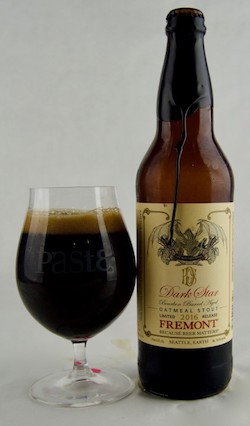
After plowing through 144 barrel-aged imperial stouts, we reached the top of the mountain with Fremont’s BBA Dark Star: The epitome of barrel-aged stout. And perhaps fittingly, it’s just a “plain” old bourbon barrel-aged stout that takes home the championship. No spices, no cacao nibs, no vanilla beans. No coffee, either—it’s the original version of BBA Dark Star that is superior. But that doesn’t mean this beer doesn’t have unique aspects. In fact, the way BBA Dark Star is blended for consistency and depth of flavor is interesting: It’s actually three different batches of the base beer, aged for 18, 12 and 8 months respectively before being blended together. In doing so, Fremont is presumably able to achieve a profile that combines the best aspects of both shorter and longer aging periods.
On the nose, this beer is burly, boozy but ultimately inviting. The barrel comes through in a big way, throwing waves of rich caramelized sugar and vanilla custard, along with solid roast. The oatmeal in the grist helps contribute to a luxurious, silky texture—as we noted earlier, each Dark Star was among the best of the tasting in terms of mouthfeel. On the palate, deep, rich molasses sweetness gives way to charred oak, vanilla and maple syrup, and what one of the tasting sheets refers to as “velvety heaven.” It’s simply a gorgeous beer, and one that shows a barrel-aging program that has invested years into making the best possible stout that they can. Everyone pay your dues to Fremont on this one: They are the barrel-aged stout masters.
Best Wheat Beer/Hefeweizen: Live Oak Hefeweizen
City: Del Valle, TX
ABV: 5.2%
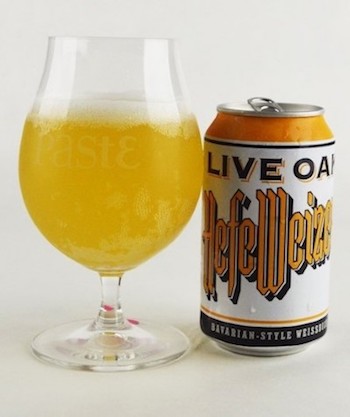
Okay, well now we know why many critics and fans have called this the best American-made hefeweizen on the market. Live Oak is one of those breweries that has been building hype in Texas for years, and I’ve been hearing about them nearly as long, but this is their first appearance in a Paste tasting. Suffice to say, it looks like they could form a terrifying hurdle alongside Urban Chestnut for any upcoming tastings of German beer styles, because Live Oak Hefeweizen is the truth. In fact, of all the other beers in the tasting, the one it reminds you of the most is the Weihenstephaner. It’s very authentically German on the nose—you would almost certainly think it was imported, rather than American, thanks to the pronounced, nuanced clove phenol in particular, and a touch of bubblegum fruitiness. Beyond that, banana bread and spice assert themselves in a gentle way, blending with a creamy, bready malt backbone. It’s exactly what you would describe if someone was asking you to tell them what the style of hefeweizen was all ‘bout. It’s a spectacular brew, and it’s our #1 wheat beer.
-

-

-

-

-

-

-

-

-

-

-

-

-

-

-

-

-

-

-

-

-

-

-

-

-

-

-

-

-

-

-

-

-

-

-

-

-

-

-

-

